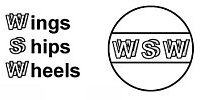 |
Mercedes L3000S | |||
| Set # 72-106 | Review by Stephen ‘Tank Whisperer’
Brezinski - sbrez(at)suscom-maine(dot)net Edited by Rob Haelterman |
|||
 |
Mercedes L3000S | |||
| Set # 72-106 | Review by Stephen ‘Tank Whisperer’
Brezinski - sbrez(at)suscom-maine(dot)net Edited by Rob Haelterman |
|||
This is WSW Modellbau’s
rendition of the Mercedes Benz L3000 S, 4x2 3-ton cargo truck produced
from 1939 to 1944 when production halted in favor of the Opel Blitz
truck. 2. The truck model consist of about 40 light gray colored cast resin parts; no etched brass or clear window parts. 3. Unlike the Pegasus model of this Mercedes truck, this model appears to have a deep bed where the bed floor is below the top of the rear tires. Engines of the Red Army website refer to this as a “high-border cargo body”. 4. No stays to hold up a tarp, nor the tarp itself (canvas bed cover), appear to be included. The tarp from the ESCI or Pegasus truck kits will not fit out of the box. 5. No clear windshield material or vehicle markings, such as license plates, are included. There is no crew figure included. 6. Rather than the common line drawing for assembly instructions, WSW uses black & white photos of the actual model in various stages of assembly. I find this effective and less prone to errors on the part of an artist. 7. Here are the major parts, many still attached to the pour plugs. The parts appear very well cast with superior detail, significantly better than the Pegasus version of the Mercedes L3000 truck. The kit is packed in a sturdy cardboard box so no parts were found broken. 8. This comparison photo with the darker gray styrene Pegasus model at left shows the significant difference in length and width. 9. A thing that bothers me with both kits is the shape of the engine hood (bonnet) where it meets the cab. Based on photos of the real L3000, I believe the engine area should be narrower where it meets the cab then flare out in a soft curve to the width of the cab. The engine hoods of these models both expand evenly from the radiator back to the width of the cab. It is because of this apparent flaw in the cab and hood that I think both of these models could be converted to another 3-ton truck such as the Magirus S3000 or Borgward B3000 trucks. 10. Nether kit has open cab doors and it will be difficult to cut and model them open. 11. The WSW Modellbau kit has a well rendered Mercedes emblem on the radiator grill. 12. Here are some vintage photos of the Mercedes L3000. This is a good view of the flare of the engine hood where it widens out to meet the width of the cab. The windshield is one piece with a spotlight on the driver’s side with two windshield wipers faintly visible at the top of the glass. There is a pennant holder staff next to the radiator and the radiator has an insulating cover partially rolled up to show the Mercedes symbol. On the fender is a small rearview mirror and a covered headlight. On the side of the bonnet we see the engine ventilation louvers. On the roof the triangular towing symbol is down indicating a trailer is not in tow. On the end of the bumper is the width indicator rod with a ball on the top, this ball is commonly painted white. 13. The overall vehicle color appears to be a satin finish dark gray. There are no white areas on the bumper and fenders that are commonly seen on German trucks to make them more visible to other drivers at night. There is an interesting tactical marking on the fender that I have not yet identified.
15. We can see the flare where the engine bonnet widens out to the width of the cab, a feature that the Pegasus and WSW models lack. The Mercedes symbol with lettering noting the diesel engine is prominent on the radiator. In this view we can see the Notek light on the left fender and the night-driving covers on the headlights (with small slits to allow reduced light to come out). At the bottom of the radiator there is a large hole which I suspect is for the crank starter (make sure your model has this). Atop the radiator is the radiator cap which in the WSW model is up, indicating the truck is towing a trailer. The width indicators on the bumper ends are made from a notably thinner rod than that on the L3000 truck in the photo above.
16. The next vintage photo shows the left rear of an L3000 with the tailgate open. The canvas bed cover is on with window flaps evident. The height of the truck suggests to me that this is an L3000 S version with 4 wheel drive (4x4). Jerry cans and storage boxes are visible hanging below the bed. This is a good view of the rear wheel with the eight holes around the rim similar to the wheels in the Pegasus model. 17. Based on the desert tan vehicle color and the palm tree symbol on the door this appears to be an Afrika Korps truck.
References Mercedes At War, German Trucks & Cars In World War II Vol. IV. Schiffer Publishing, 1991. This is a good cheap, softcover reference book. Trucks Of The Wehrmacht, by Reinhard Frank, Schiffer Publishing, 1994. http://www.autogallery.org.ru/gothers.htm : Oldtimers Picture Gallery website from Russia of trucks and autos, mainly 1932-1945 http://www.o5m6.de/ForeignTrucks.html : Engines of the Red Army website focusing on Soviet vehicles of WW2 http://www.kfzderwehrmacht.de/index.html : Good website with information on all types of vehicles from many nations during the WW2 period.
|
| Back to WSW Kit List | Back to Home Page |
| Review Last Updated: 25 August 2010 |